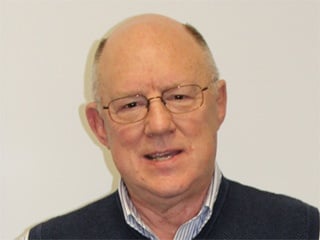Recently, there has been a growing public buzz about the impact of making it possible for any telephone number user to keep his/her same telephone number regardless of where he/she moves within the United States.
From a purely technical perspective, especially in this world of IP-to-IP connectivity and wireless, there is nothing from a network operations perspective that would prevent such an occurrence.
However, as we all know, the devil is in the details.
When Local Number Portability (LNP) began in 1998, it was heavily restricted to moves within a single Rate Center. The concept of porting a telephone number beyond a Rate Center, LATA and state boundaries was held to be a “non-starter” within the fixed line telecom sector.
However, over time, it became clear that the artificial restrictions placed on Local Number Portability were not going to go without challenge.
As a result, the restrictions on where the telephone user in the fixed-line telecom sector could port his/her number were stretched to include the whole LATA in which the user resided.
Wireless users already realized that they could move their telephone number across LATA and even state boundaries. In fact. Wireless numbers are ported across the fifty (50) Major Trading Areas (MTAs) which are the basic geographic assignment for wireless telephone numbers. Sometimes this situation is classified as permanent roaming.
Also, technology advances in the form of IP-to-IP telephony routing have made it possible to easily port telephone numbers anywhere in the world.
So what’s the big deal about National Number Portability (NNP) and Non-Geographic Local Routing Numbers (NGLRNs)?
Again, the issue is not technical from a network operations perspective. The issue is how does the structure of the business and billing support systems that surround the network get brought up-to-same level of maturity?
Following are a few examples where NNP could make the situation a little clearer:
- Today local exchange calling areas are defined by the user’s telephone number NPA-NXX codes (the first six (6) digits).
- Furthermore, when a fixed line use dials/pulses terminating telephone number NPA-NXX codes that have interLATA translations such calls are immediately handed off to the user’s prescribed Interexchange Carrier (IXC) for routing, transport and call completion.
- Also, when a user dials/pulses non-native intraLATA terminating NPA-NXX codes, such calls usually become the trigger to do an LNP database dip to determine whether there is a Location Routing Number (LRN) to which such calls are routed and completed.
In reality, this list of items that are taken for granted in the fixed-line telecom sector could go on and on but the point to made is that with NNP, each of these items becomes a potential source of trouble for everyone involved.
For instance, let’s say a local fixed-line user in Boston, MA has a telephone number that belongs in a San Francisco, CA LATA (based on a look-up of the NPA-NXX code in the Local Exchange Routing Guide (LERG).
- How does this user make a 1+ ten-digit local call without finding that the call has been handed off to his/her IXC of choice?
- How does this user call 911 and be seen by the local Public Safety Answering Point (PSAP)as a local user?
- How does this user avoid being billed toll charges for a local call?
- Which NPAC LNP database region would have to be queried to determine whether there is an LRN to which this type of call should be routed?
- When the user makes an intraLATA or interLATA toll call how does the biller of such calls measure geographic distance if it applies from a rating view?
As you can see there is a myriad of possibilities most of which are bad from a customer’s perspective that could stem from such a situation.
A seemingly far-fetched result is that today’s interLATA call processing requirement would have to be scrapped.
But is this possibility so far-fetched?
I submit that it is not.
In my next blog, I will attempt to start to explain how we can all manage the future in this environment to effectively deal with what needs to be done in a timely manner.

